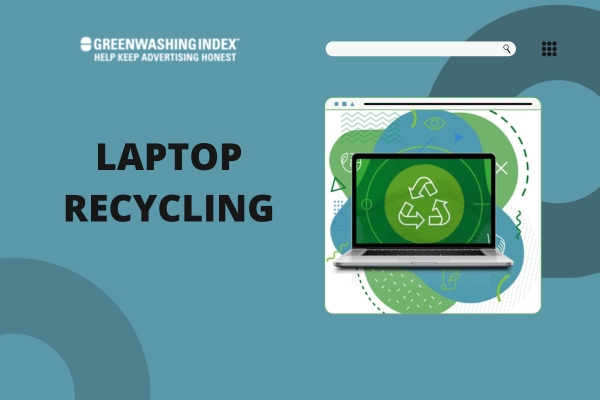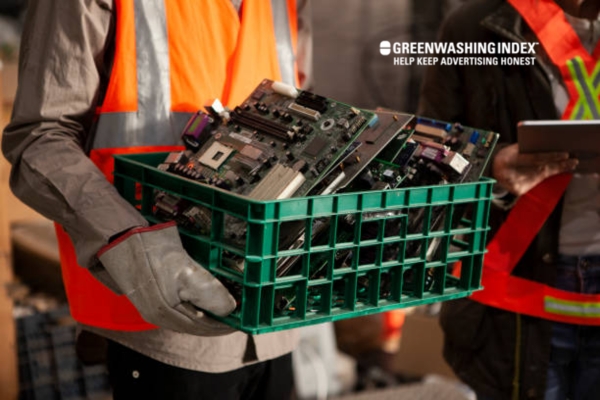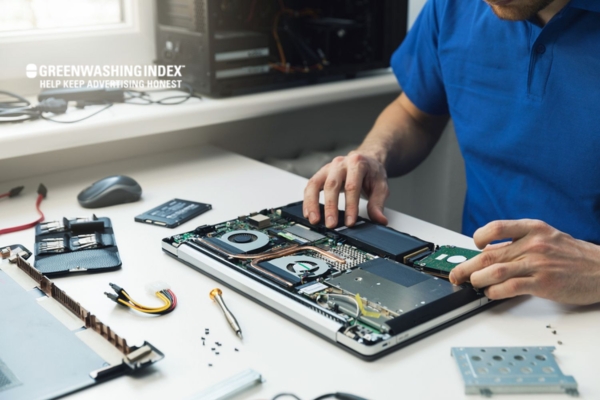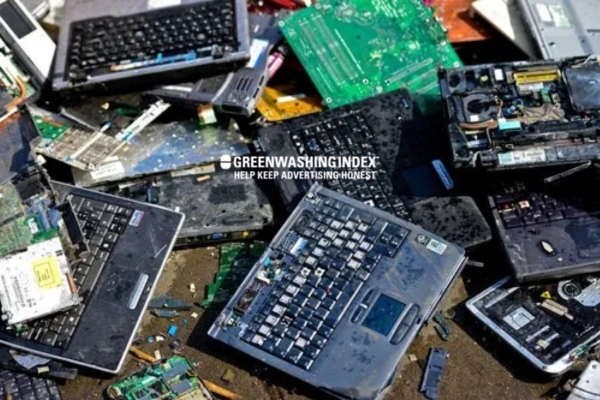

Ever wondered what happens to old laptops? They hold your cherished memories and carry your workload, but when they get tired, it’s crucial not to just toss them aside. Laptop recycling is about giving these trusty gadgets a new lease on life in the most eco-friendly way possible.
In this guide, I’ll walk you through why recycling your laptop isn’t just good for you – it’s vital for our planet. Get ready to be part of something big!
Recycling laptops is more than just throwing away an old gadget; it’s a careful process that starts with you. It involves cleaning up the device, making sure all your personal info is gone for good, and then finding the right spot to pass it on so it can do more good work. Whether that means getting some cash from selling or trading in or doing a solid by donating it – I’ve got all the steps sorted for you.
What You’ll Discover Here:
Laptop recycling is not just about getting rid of old stuff. It is a way to help the earth. When we throw away our laptops, they can hurt the ground and water because they have bad stuff in them, like lead and mercury.

By recycling laptops, we make sure these things don’t harm our world. Also, when we recycle, we save energy and resources because making something new takes a lot of power.
When I think about why laptop recycling is important, a few big reasons stand out. Let me tell you all about them:
Every time someone recycles a laptop, it means one less piece of harmful waste in our world.
The life cycle of your device is its whole story from start to end:
Here’s where recycling fits in! Instead of throwing your laptop away at step 3, you send it off to be recycled:
By doing this, instead of just being wasted and taking up space on Earth, old laptops help us save materials and energy by becoming part of something new again!
Also Read: Metal Recycling: Your Guide to Sustainable Disposal
Before I send my old laptop off to be recycled, I always make sure it’s clean. This isn’t just about being neat; it’s also a way to show respect for the recycling process and the people who will handle my device. A clean laptop is easier and safer to recycle. Here’s how I like to do it:

It’s important to know that cleaning a laptop before recycling isn’t just about dusting off some crumbs from the keyboard. It involves giving the whole device a good wipe-down. I use simple steps that anyone can follow.
First things first, I make sure my laptop is turned off and unplugged from any power source. Safety comes first!
Here’s what you’ll need:
Now, let’s get started with these easy steps:
By following these steps carefully and gently, I clean my laptop thoroughly in preparation for recycling it in an environmentally friendly way—making sure that every part from screen to case shines!
Laptop recycling is a smart way to deal with old technology. But before you hand over your device, there’s some work to do. The two big steps are cleaning your laptop and securing your data. Let me walk you through each one.
The first thing I do is sanitize the areas on my laptop that I touch a lot. That means the keyboard, trackpad, and screen need a good clean before anyone else uses them. Here’s how I do it:
I make sure not to use spraying cleaners directly on my laptop, as liquids can cause damage if they get inside.
It’s crucial to back up all personal files before erasing them from your laptop—this keeps your data safe.
Here’s what I always do:
It’s really important not to skip these safety measures because you don’t want personal information falling into someone else’s hands.
Understanding how to copy all those precious files is necessary whether you’re using a Mac or Windows PC:
For macOS users:
For Windows users:
Some people also use cloud storage like Dropbox or Google Drive—it’s like storing stuff online instead of having it only on one computer, which is super handy if something happens to that computer because you’ve got another copy safe online!
Before you think of recycling your laptop, it is important to make sure all your personal stuff is gone for good. This means wiping all the data off and resetting your laptop to the way it was when you first bought it. Let’s walk through how you can do this for both MacBooks and Windows laptops.
These steps will help ensure that all of your personal info is cleared out before saying goodbye to your old friend.
Erasing personal information completely is key when recycling a laptop:
Safety tip! Always double-check that no files are recoverable by plugging in our device after resetting—just making sure it looks like how we first unwrapped it when new!
Once our laptop is cleaned up data-wise, we next figure out what we can do with it:
Now, that’s about everything I have learned about how one can handle their old laptops wisely through Laptop Recycling!
Also Read: Paint Recycling: The Ultimate Guide to Responsible Disposal
When it comes to laptop recycling, the “where” is just as important as the “how”. Finding a place to recycle your old laptop helps you do good for the planet. So, let’s dive in and find out how you can locate a recycler that’s up to the task.

Finding a place that accepts laptops for recycling can be pretty straightforward. Here’s what I usually do:
Through these steps, you’ll likely find a certified recycler without too much hassle.
There are some popular store programs designed specifically for taking back electronics like laptops. Knowing about them makes the process of laptop recycling even smoother. Here are some of the well-known ones:
These programs can be convenient ways not just to get rid of your old tech but perhaps score discounts on future purchases if they offer trade-in deals in exchange for recycling your used equipment.
Remembering these pointers makes laptop recycling less daunting and more impactful. It feels great knowing my old laptop will be handled responsibly rather than ending up somewhere it doesn’t belong!
Also Read: Ink Cartridge Recycling: Your Ultimate Green Guide
When I think about laptop recycling, the first thing that comes to my mind is how to get the most value from my old laptops. There are usually two main choices: trading them in or selling them directly.
Trade-In: This means giving your old laptop to a company, and they give you money or credit toward buying a new one. The good bit about trade-ins is that it is easy. You don’t have to spend time looking for buyers.
Selling Directly: On the other hand, selling your laptop by yourself usually gets you more cash than trading it in.
Trade-in options vary by brand:
Remember:
If I decide not to do trade-in and sell my laptop myself, there are platforms I can use:
Online Marketplaces
Specialized Tech Resell Sites
Also Read: CD Recycling Secrets: Revamp Old Music Discs Now!
When I talk about laptop recycling, people often think it’s just about turning old laptops into parts or scraps. However, there’s another side to this – donating laptops. This way, not only do we recycle, but we also give our tech a second life and help those in need.
Many folks out there can’t afford a computer. Schools in lower-income areas might lack resources, too. By donating our used laptops, we can make a big difference. So let me break down how donating can be part of responsible laptop recycling:
Find a Charity: First things first, look for charities that take old laptops. These could be local or national organizations focused on education or helping low-income families.
Check the Laptop Condition: Before giving it away, make sure the laptop works decently. It doesn’t have to be top-notch, but functional enough for basic tasks without frequent breakdowns.
Clear Personal Data: Security is key! Wipe your data completely from the device before handing it off. Use software designed for this purpose or follow guidelines provided by tech experts.
Include Accessories: If I have them lying around, I include chargers and cases with the laptop donation. They’re just as important to new users who haven’t got these extras.
Official Donation Centers: Some companies, like Goodwill or The World Computer Exchange, specialize in tech donations and refurbishment. Such places guarantee that your laptop will go to someone who really needs it.
Donating is a wonderful addition to standard laptop recycling methods because not only does it stop waste and reduce environmental harm, but it also touches lives directly by providing access to technology that some people wouldn’t otherwise have.
As simple as it is uplifting – giving an old laptop a new purpose through donation brightens up more than one future at once!
As I wrap up this guide on laptop recycling, it’s clear that the process is more than just disposing of an old device. Recycling laptops benefit the environment by saving resources and reducing e-waste.
It’s a straightforward cycle that starts with us being responsible for our electronic consumption and ends with a cleaner planet. Doing the legwork beforehand, like cleaning our devices, securing data, resetting factory settings, or choosing to donate, sell, or trade in, are all acts that contribute significantly to the life cycle of these gadgets.
Remembering to recycle our laptops through proper channels ensures we’re partaking in a sustainable future while possibly helping others or gaining some value back from older technology.

Don't let aphids, slugs, and caterpillars ruin another plant. Take back control with simple, natural methods that actually work.